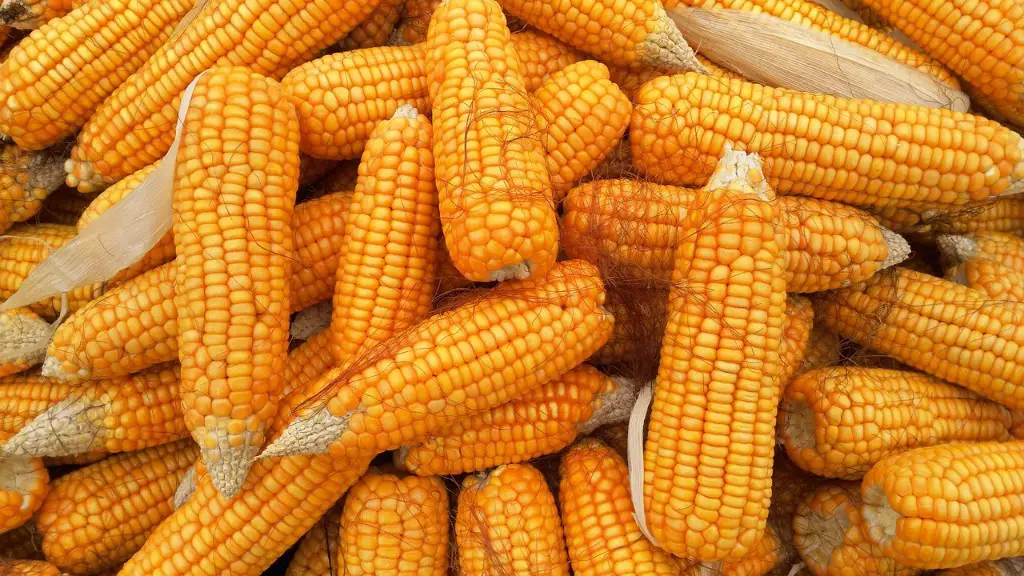Agriculture is a vital part of the global economy, and its two primary forms, conventional and organic, each have benefits and drawbacks. Conventional agriculture is a method of farming in which technology and chemicals are used to control pests and improve crop yields. Organic agriculture, on the other hand, does not use synthetic inputs to control pests. It relies instead on building biodiversity and soil fertility naturally. In order to fully understand the implications of each type of agriculture, its essential components must be examined.
Conventional agriculture utilizes a wide variety of inputs, including synthetic fertilizers, pesticides, and genetically modified organisms (GMOs). It often involves intensive farming techniques such as monocropping and irrigation, with the goal of maximizing yield. This form of agriculture is highly productive, and is often credited for the significant increase in food production over the past few decades. However, its reliance on chemical inputs can have a negative effect on soil and water quality, as well as on human health.
Organic agriculture is a system of farming that relies on natural inputs to maintain healthy soil, increase biodiversity, and control pests. It is a “closed” system, meaning that all inputs must come from within the farm, such as green manure or compost. Organic agriculture is labor intensive, making it more expensive than conventional methods. However, its emphasis on biodiversity can have a positive effect on soil and water quality, as well as on human health. Additionally, organic produce is often considered to be more flavorful and nutrient dense.
In conclusion, there are two main types of agriculture: conventional and organic. Conventional agriculture relies heavily on technology and chemical inputs to control pests and improve crop yields, while organic agriculture seeks to build soil and biodiversity naturally. Both types of agriculture have benefits and drawbacks, and depending on a variety of factors, one may be more beneficial than the other.
Advantages and Disadvantages of Different Types of Agriculture
While both conventional and organic agriculture have advantages and disadvantages, it is important to note that there is no one-size-fits-all solution when it comes to choosing the best type of agriculture for a particular context or situation. When making a decision, a variety of factors should be taken into consideration, such as the soil type, climate, and the type of crops being grown. Additionally, the farmer’s goals, resources, and expertise must be taken into account.
The primary advantage of conventional agriculture is its ability to produce large amounts of food in a relatively short period of time. This form of agriculture is also relatively inexpensive, as it relies heavily on synthetic inputs and often requires minimal labor. However, its reliance on chemicals and other synthetic inputs can have a negative impact on human health, as well as on soil and water quality.
Organic agriculture, on the other hand, has several advantages that make it an attractive option for many farmers. It requires minimal synthetic inputs, and instead emphasizes natural inputs such as composts, green manures, and wildlife. Organic agriculture also typically requires less labor than conventional agriculture, making it more cost effective. Additionally, studies have found that organic agriculture can have a positive impact on soil fertility, water quality, and human health. However, its lower yields and dependence on natural inputs can make it less profitable than conventional agriculture.
Environmental Impact of Different Types of Agriculture
The environmental impact of conventional and organic agriculture can vary greatly depending on the type of inputs used and the manner in which they are applied. Conventional agriculture relies heavily on synthetic inputs, such as fertilizers and pesticides, which can have a detrimental effect on soil and water quality if not used properly. Additionally, the intensive farming techniques used in conventional agriculture can deplete soil fertility, as well as lead to the loss of biodiversity in an area.
Organic agriculture, on the other hand, emphasizes natural inputs and often relies on biodiversity and soil management techniques to achieve its goals. Studies have found that organic agriculture can have a positive effect on soil fertility, as well as on water quality. Additionally, organic agriculture is often credited with helping to preserve biodiversity, as its emphasis on natural inputs helps to reduce the impact of synthetic inputs.
Economic Considerations of Different Types of Agriculture
The economic considerations of different types of agriculture can vary depending on the type of inputs and techniques used. Conventional agriculture is generally cheaper than organic agriculture, as it utilizes fewer labour-intensive techniques and relies heavily on synthetic inputs. Additionally, its intensive farming practices often result in higher yields than are seen in organic systems. However, its reliance on synthetic inputs can increase input costs, as well as lead to a decrease in soil fertility in the long-term.
Organic agriculture, on the other hand, is often more expensive than conventional agriculture due to its reliance on natural inputs and labour-intensive practices. Additionally, organic agriculture is typically more profitable as its produce is often sold at a premium. However, organic agriculture is not as productive as conventional agriculture, and its yields are often lower due to its reliance on natural inputs.
Social Implications of Different Types of Agriculture
The social implications of different types of agriculture can vary significantly depending on the type of inputs used and the manner in which they are applied. Conventional agriculture typically relies on synthetic inputs, which can have a detrimental effect on human health if not used properly. Additionally, its intensive farming techniques can cause a decrease in biodiversity in an area, which may impact local communities in a variety of ways.
Organic agriculture, on the other hand, is often credited with having a positive effect on human health, as its emphasis on natural inputs reduces the risk of exposure to hazardous chemicals. Additionally, organic agricultural techniques are often beneficial for animal welfare, as they usually involve no or minimal animal husbandry. In addition to this, organic agriculture has been shown to have a positive effect on soil fertility, and thus can contribute to the health of local ecosystems.
Conclusion of Different Types of Agriculture
Agriculture is a vital part of the global economy, and its two primary forms, conventional and organic, each have benefits and drawbacks. While conventional agriculture is often cheaper and more productive, its reliance on synthetic inputs can have a detrimental effect on soil and water quality, as well as on human health. Organic agriculture, on the other hand, has several advantages, such as improved soil fertility, increased biodiversity, and higher nutrient content in produce. However, its labour-intensive techniques and lower yields can make it less profitable than conventional agriculture. Ultimately, the best type of agriculture for a particular context or situation will depend on a variety of factors, such as the soil type, climate, and the resources and goals of the farmer.



